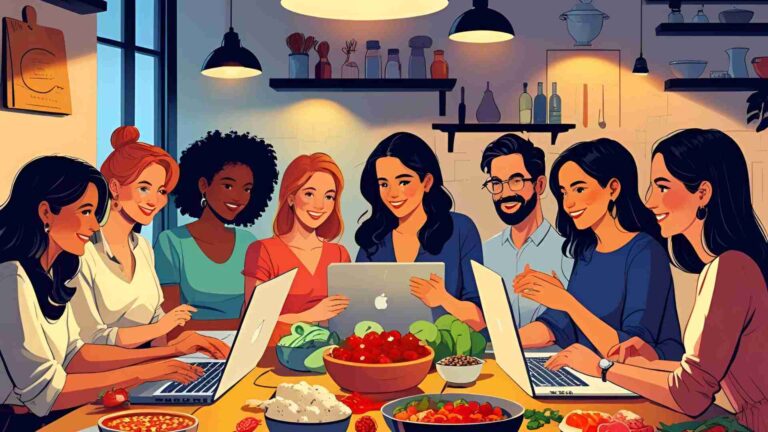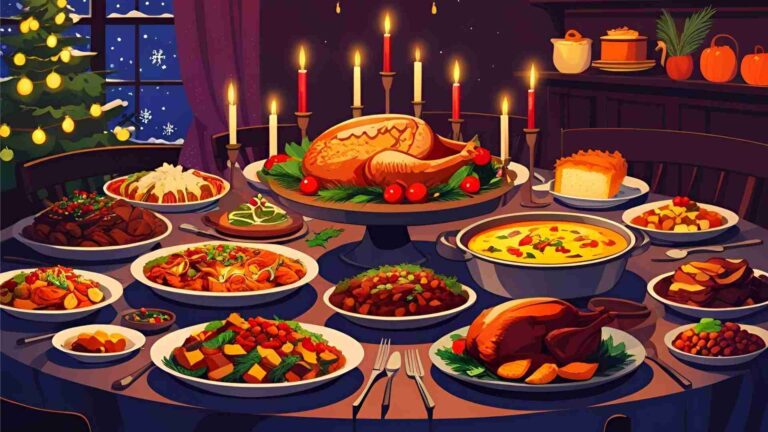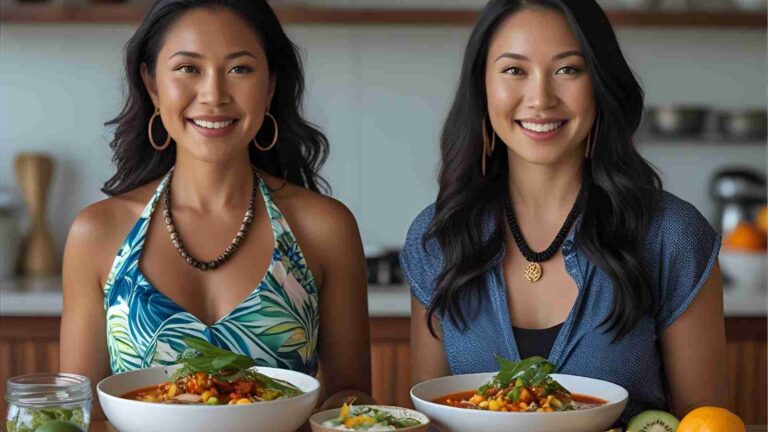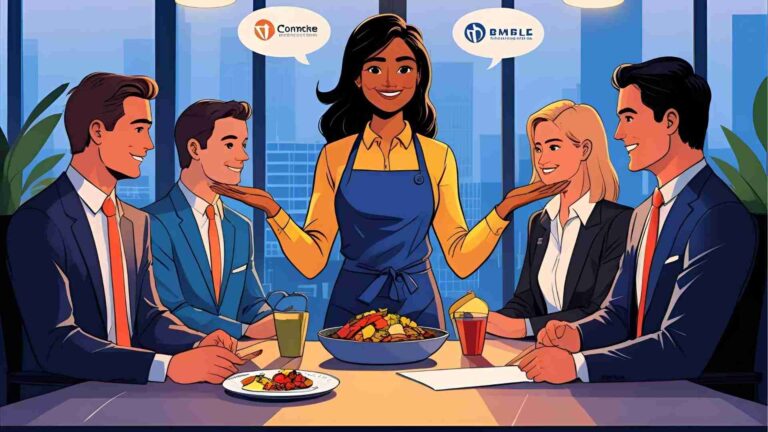Food Blogs and the Intent Behind Lengthy Stories
Food blogs have become a cornerstone of culinary culture, blending recipes with narratives that captivate readers. The practice of prefacing recipes with lengthy stories has sparked debate—some readers cherish the context, while others yearn for quick access to ingredients and instructions. This article delves into the intent behind these storytelling practices, exploring their role in enhancing user engagement, boosting SEO, fostering authenticity, and driving monetization. By examining the strategic and emotional dimensions of food blog narratives, we uncover why they matter and how tools like WP Recipe Maker and platforms like Grigora amplify their impact.
The Evolution of Food Blog Storytelling
Food blogging has evolved from simple recipe lists to immersive storytelling platforms. Early food blogs focused on functionality, delivering ingredients and steps with minimal flair. As the digital landscape grew competitive, bloggers began weaving narratives to differentiate their content. These stories—ranging from personal anecdotes to cultural histories—add depth, making recipes more than just instructions. They transform cooking into an experience, inviting readers to connect emotionally with the dish.
This shift reflects broader trends in content marketing, where storytelling fosters engagement and loyalty. In food blogging, narratives serve multiple purposes: they humanize the blogger, provide context for the recipe, and align with search engine algorithms favoring rich, long-form content. Understanding these motivations reveals why lengthy stories have become a staple of successful food blogs.
Why Lengthy Stories Matter in Food Blogs
1. SEO Benefits: Driving Traffic and Visibility
Search Engine Optimization (SEO) is a primary driver of lengthy narratives in food blogs. Long-form content increases dwell time—the duration a visitor spends on a page—signaling to search engines like Google that the content is valuable. Posts exceeding 1,000 words often rank higher in Search Engine Results Pages (SERPs) due to their depth and keyword density.
How Stories Enhance SEO
- Keyword Opportunities: Narratives allow bloggers to incorporate long-tail keywords naturally. For example, a story about the history of shahi paneer might include phrases like “traditional shahi paneer recipe” or “history of Indian cuisine,” aligning with specific user queries.
- Increased Indexable Content: More text means more material for search engines to crawl, improving organic visibility.
- Engagement Metrics: Stories encourage readers to linger, reducing bounce rates and boosting SEO performance.
Example: Keyword Integration
Consider a blog post about homemade pasta. A narrative about learning the recipe from an Italian grandmother could weave in keywords like “authentic Italian pasta recipe,” “homemade pasta tips,” or “traditional pasta-making techniques.” These targeted phrases enhance discoverability without feeling forced.
Table: SEO Impact of Long-Form Content
| Metric | Impact of Long-Form Content |
|---|---|
| Dwell Time | Increases as readers engage with stories |
| Keyword Density | Higher opportunity for long-tail keywords |
| SERP Ranking | Improved due to depth and relevance |
| Bounce Rate | Lowered by engaging narratives |
2. Personal Touch: Building Authenticity and Trust
In a crowded food blogging niche, authenticity sets bloggers apart. Personal stories humanize the writer, transforming them from a faceless recipe provider into a relatable figure. Whether sharing a childhood memory or a cooking mishap, these narratives convey passion and expertise, fostering trust with readers.
Crafting a Unique Voice
Bloggers can define their niche—family-focused meals, budget cooking, or vegan cuisine—and reflect it in their stories. For instance, a blogger specializing in gluten-free recipes might share their journey with dietary restrictions, resonating with readers facing similar challenges. This emotional connection encourages loyalty, with readers returning for both recipes and the blogger’s distinctive perspective.
Case Study: The Power of Vulnerability
Megan Finnerty, founder of the Arizona Storytellers Project, emphasizes vulnerability as an “emotional shortcut to empathy.” A food blogger recounting a failed attempt at sourdough bread invites readers to empathize, creating a bond that transcends the recipe itself. This approach aligns with Finnerty’s storytelling principles, which prioritize serving the audience over self-promotion.
3. Enhancing Recipe Utility Through Context
Stories often include practical insights that make recipes more accessible. By discussing ingredient substitutions, preparation techniques, or cultural significance, bloggers empower readers to adapt recipes to their needs. For example, a narrative about a Thai curry might explain how to adjust spice levels or substitute lemongrass, catering to novice cooks.
Practical Benefits
- Ingredient Flexibility: Stories can highlight alternatives for hard-to-find ingredients, broadening the recipe’s appeal.
- Technique Tips: Anecdotes about mastering a tricky step, like tempering chocolate, provide actionable guidance.
- Cultural Context: Historical or cultural details enrich the cooking experience, making it educational and immersive.
Chart: Storytelling Enhances Recipe Utility

4. Monetization: Leveraging Stories for Partnerships
Lengthy narratives create opportunities for monetization through sponsorships and affiliate marketing. By weaving sponsored products into stories, bloggers can promote brands authentically, maintaining reader trust. For instance, a story about baking holiday cookies might feature a specific brand of vanilla extract, seamlessly integrating the endorsement.
Monetization Strategies
- Sponsored Content: Brands value blogs with engaged audiences, making storytelling a vehicle for partnerships.
- Affiliate Links: Narratives can include links to kitchen tools or ingredients, earning commissions on sales.
- Increased Traffic: Higher visibility from SEO-driven stories attracts more readers, amplifying monetization potential.
Example: Sponsored Storytelling
A blogger partnering with a cookware brand might share a story about mastering a family recipe using the brand’s skillet. By highlighting the product’s features within the narrative, the blogger promotes it organically, enhancing credibility and engagement.
Balancing Storytelling with User Experience
While lengthy stories offer significant benefits, they can frustrate readers seeking quick access to recipes. Scrolling through paragraphs to find ingredients and instructions risks alienating time-pressed visitors, particularly those arriving via search engines. This tension has fueled criticism of food blog narratives, with some readers joking about “life stories” preceding recipes.
The Role of the Jump-to-Recipe Button
A jump-to-recipe button addresses this issue, allowing readers to bypass the narrative and access the recipe directly. This feature respects diverse reader preferences—some enjoy the story, while others prioritize efficiency. WP Recipe Maker, a popular WordPress plugin, simplifies this integration, enhancing user experience without sacrificing storytelling benefits.
WP Recipe Maker Features
- Jump-to-Recipe Button: Enables instant access to the recipe card.
- Printable Recipes: Offers options to print or save recipes digitally.
- SEO Optimization: Automatically includes recipe metadata, boosting search visibility.
- Price: Starts at $49/year for a single site license, with premium plans up to $149/year for advanced features.
Quote
“Implementing a jump-to-recipe button is a game-changer for user experience. It respects the reader’s time while accommodating those who enjoy the narrative.” — Birthe Vandermeeren, Cofounder of Bootstrapped Ventures
Grigora: Streamlining Blog Management
Grigora, a versatile platform for bloggers, complements tools like WP Recipe Maker by simplifying content management. Its features cater to food bloggers aiming to balance storytelling with functionality.
Grigora Features
- Customizable Templates: Tailored for recipe blogs, ensuring consistent formatting.
- SEO Tools: Built-in optimization features to enhance discoverability.
- Analytics Dashboard: Tracks performance metrics like traffic and engagement.
- Price: Free basic plan; premium plans start at $10/month for advanced features.
Table: Comparison of WP Recipe Maker and Grigora
| Feature | WP Recipe Maker | Grigora |
|---|---|---|
| Jump-to-Recipe Button | Yes | No (supports plugins) |
| SEO Optimization | Recipe metadata inclusion | Built-in SEO tools |
| Customizable Templates | Limited to recipe cards | Extensive blog-wide templates |
| Analytics | Basic | Comprehensive dashboard |
| Price | $49–$149/year | Free–$10/month |
Storytelling Principles for Food Bloggers
Drawing from Megan Finnerty’s storytelling framework, food bloggers can craft compelling narratives by adhering to these principles:
- Serve the Audience: Avoid self-promotion; focus on stories that resonate with readers.
- Use Visual Words: Describe scenes vividly to create mental images, e.g., “the sizzle of garlic in olive oil.”
- Be Vulnerable: Share relatable struggles, like a recipe disaster, to foster empathy.
- Know Your Value: Ensure the story conveys a meaningful point, such as the joy of shared meals.
- Practice Regularly: Rehearse stories to refine delivery and adapt to different contexts.
Example: Applying Principles
A blogger might share a story about burning their first batch of cookies, using sensory details (“the acrid smell of charred sugar”) and vulnerability (“I felt like a failure”). The point—perseverance in cooking—ties back to the recipe, encouraging readers to try it despite setbacks.
The Emotional Power of Food Stories
Food is inherently emotional, tied to memory, culture, and identity. Stories amplify this connection, making recipes more than instructions—they become vessels for shared experiences. As Laura Esquivel’s Like Water for Chocolate illustrates, food narratives can evoke laughter, tears, and hunger simultaneously. Bloggers tap into this by sharing personal or cultural tales, creating a sense of intimacy with readers.
Emotional Triggers
- Nostalgia: Stories about childhood dishes, like a grandmother’s sauce, evoke warmth.
- Humor: Anecdotes about cooking mishaps lighten the mood and build rapport.
- Cultural Pride: Historical narratives celebrate heritage, resonating with diverse audiences.
Chart: Emotional Impact of Food Stories

Practical Tips for Crafting Food Blog Stories
To maximize the impact of narratives, bloggers should follow these guidelines:
- Keep It Concise: Aim for 300–500 words to avoid overwhelming readers. Ernest Hemingway’s six-word story (“For sale: Baby shoes. Never worn.”) proves brevity can be powerful.
- Stay Relevant: Align stories with the recipe’s theme, e.g., a cupcake recipe paired with a baking anecdote.
- Use Sensory Details: Describe tastes, smells, and textures to immerse readers.
- Incorporate Structure: Follow a clear arc—context, action, resolution—to maintain flow.
- Test and Refine: Analyze reader feedback and engagement metrics to optimize storytelling.
Example: Structured Narrative
Context: Growing up, Sunday dinners meant my Nonna’s marinara sauce, simmering all day.
Action: I tried recreating it, but my first attempt was a watery mess.
Resolution: After tweaking the herbs and cooking time, I nailed it—a taste of home.
This structure keeps the story focused and ties it to the recipe.
Monetization Through Storytelling
Storytelling enhances monetization by creating a platform for authentic brand integrations. Bloggers can leverage narratives to:
- Feature Sponsored Products: A story about a family barbecue could highlight a grill brand, blending promotion with narrative.
- Drive Affiliate Sales: Links to ingredients or tools within stories generate commissions.
- Attract Partnerships: High engagement from storytelling makes blogs appealing to brands.
Case Study: Successful Sponsorship
A blogger partnered with a spice company, sharing a story about discovering a Moroccan tagine recipe during travel. By describing how the brand’s spices elevated the dish, the blogger promoted the product organically, resulting in a 20% increase in affiliate link clicks.
The Role of Visuals in Food Storytelling
Visuals amplify food stories, compensating for the inability to convey taste or smell digitally. High-quality photos and videos—often dubbed “food porn”—trigger emotional and physical cravings, enhancing engagement.
Visual Storytelling Tips
- Photography: Use natural lighting and close-ups to showcase textures, e.g., the golden crust of a pie.
- Videos: Create short, step-by-step tutorials to clarify complex techniques.
- Infographics: Summarize tips or ingredient benefits for quick reference.
Example: Visual Integration
A blog post about sushi might include a video demonstrating rolling techniques, photos of vibrant ingredients, and an infographic on fish sustainability. These elements make the narrative more immersive and practical.
Navigating Reader Preferences
Not all readers embrace lengthy stories. Some, like Sydney Arin Go from Semrush, prefer “recipe” content—straightforward instructions without narrative fluff. Others seek “movie” content, craving stories that educate or inspire. Bloggers must cater to both by:
- Offering Choice: Jump-to-recipe buttons ensure accessibility for recipe-focused readers.
- Segmenting Content: Use subheadings to separate stories from instructions, aiding navigation.
- Analyzing Feedback: Monitor comments and analytics to gauge reader preferences.
Quote
“When your reader wants to know how to do something, they don’t need a fancy story. They want the recipe.” — Sydney Arin Go, Content Coordinator at Semrush
Tools and Platforms for Food Bloggers
WP Recipe Maker
WP Recipe Maker streamlines recipe presentation, offering features like:
- Recipe Cards: Standardized, visually appealing formats.
- Metadata Integration: Enhances SEO with structured data.
- User Features: Jump-to-recipe and print options improve accessibility.
Grigora
Grigora empowers bloggers with:
- Content Management: Simplifies post creation and organization.
- Customization: Offers recipe-friendly templates.
- Scalability: Supports growth with robust performance.
Chart: Tools for Food Bloggers

Conclusion
Lengthy stories in food blogs are more than embellishments—they’re strategic tools that enhance SEO, build authenticity, improve recipe utility, and drive monetization. By blending personal narratives with practical insights, bloggers create engaging, memorable content that resonates with readers. Tools like WP Recipe Maker and Grigora empower bloggers to balance storytelling with user experience, catering to diverse preferences. Whether evoking nostalgia or solving cooking challenges, these stories transform recipes into cultural and emotional experiences, proving that in food blogging, the narrative is as vital as the dish itself.
FAQs
Why do food bloggers include long stories before recipes?
Stories boost SEO, build authenticity, provide context, and create monetization opportunities.
How can I make my food blog stories engaging?
Use sensory details, stay concise, and align stories with the recipe’s theme.
What tools help balance storytelling and user experience?
WP Recipe Maker offers jump-to-recipe buttons and SEO features, while Grigora provides customizable templates and analytics.
How do visuals enhance food blog storytelling?
Photos, videos, and infographics make stories immersive, compensating for missing sensory elements like taste.
Can storytelling help monetize my food blog?
Yes, narratives attract sponsorships and affiliate opportunities by increasing engagement and traffic.
Please share this Food Blogs and the Intent Behind Lengthy Stories with your friends and do a comment below about your feedback.
We will meet you on next article.
Until you can read, Blog-reader survey results and the why behind what’s on the blog






